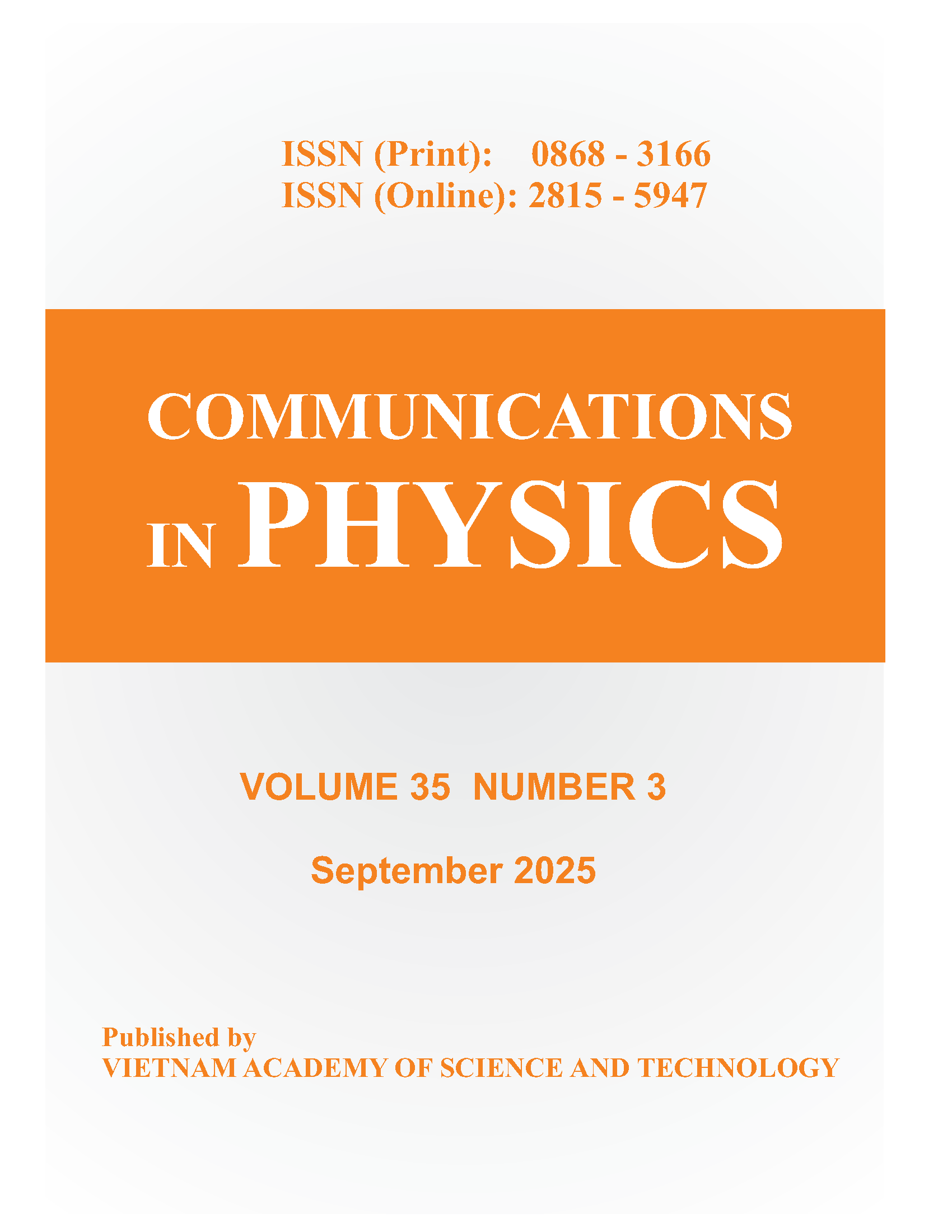Effects of hydrophobic and electrostatic interactions on the escape of nascent proteins at bacterial tibosomal exit tunnel
Author affiliations
DOI:
https://doi.org/10.15625/0868-3166/17434Keywords:
Post-translational escape, ribosomal exit tunnel, electrostatic and hydrophobic interactions, diffusion modelAbstract
We study the escape process of nascent proteins at the ribosomal exit tunnel of bacterial Escherichia coli by using molecular dynamics simulations with coarse-grained and atomistic models. It is shown that the effects of hydrophobic and electrostatic interactions on the protein escape at the E. coli's tunnel are qualitatively similar to those obtained previously at the exit tunnel of archaeal Haloarcula marismortui, despite significant differences in the structures and interactions of the ribosome tunnels from the two organisms. Most proteins escape efficiently and their escape time distributions can be fitted to a simple diffusion model. Attractive interactions between nascent protein and the tunnel can significantly slow down the escape process, as shown for the CI2 protein. Interestingly, it is found that the median escape times of the considered proteins (excluding CI2) strongly correlate with the function \(N_h + 5.9 Q\) of the number of hydrophobic residues, \(N_h\), and the net charge, \(Q\), of a protein, with a correlation coefficient of 0.958 for the E. coli's tunnel. The latter result is in quantitative agreement with a previous result for the H. marismortui's tunnel.
Downloads
References
A. N. Fedorov and T. O. Baldwin, Cotranslational protein folding, J. Biol. Chem. 272 (1997) 32715.
D. V. Fedyukina and S. Cavagnero, Protein folding at the exit tunnel, Ann. Rev. Biophys. 40 (2011) 337.
F. Trovato and E. P. O’Brien, Insights into cotranslational nascent protein behavior from computer simulations, Annu. Rev. Biophys. 45 (2016) 345.
P. T. Bui and T. X. Hoang, Folding and escape of nascent proteins at ribosomal exit tunnel, J. Chem. Phys. 144 (2016) 095102.
P. T. Bui and T. X. Hoang, Protein escape at the ribosomal exit tunnel: Effects of native interactions, tunnel length, and macromolecular crowding, J. Chem. Phys. 149 (2018) 045102.
P. T. Bui and T. X. Hoang, Protein escape at the ribosomal exit tunnel: Effect of the tunnel shape, J. Chem. Phys. 153 (2020) 045105.
P. T. Bui and T. X. Hoang, Hydrophobic and electrostatic interactions modulate protein escape at the ribosomal exit tunnel, Biophys. J. 120 (2021) 4798–4808.
K. Dao Duc, S. S. Batra, N. Bhattacharya, J. H. Cate and Y. S. Song, Differences in the path to exit the ribosome across the three domains of life, Nucleic Acids Res. 47 (2019) 4198.
J. Frydman, Folding of newly translated proteins in vivo: the role of molecular chaperones, Annual review of
biochemistry 70 (2001) 603.
Z. L. Watson, F. R. Ward, R. Meheust, O. Ad, A. Schepartz, J. F. Banfield et al., Structure of the bacterial ribosome at 2 angstrom resolution, Struct. Biol. Mol. Biophys. 9 (2020) e60482.
C. Clementi, H. Nymeyer and J. N. Onuchic, Topological and energetic factors: what determines the structural details of the transition state ensemble and “en-route” intermediates for protein folding? an investigation for small globular proteins1, J. Mol. Biol. 298 (2000) 937.
T. Veitshans, D. Klimov and D. Thirumalai, Protein folding kinetics: timescales, pathways and energy landscapes in terms of sequence-dependent properties, Fold. Des. 2 (1997) 1.
D. Klimov and D. Thirumalai, Viscosity dependence of the folding rates of proteins, Phys. Rev. Lett. 79 (1997) 317.
A. S. Petrov, C. R. Bernier, C. Hsiao, A. M. Norris, N. A. Kovacs and C. C. e. a. Waterbury, Evolution of the ribosome at atomic resolution, Proc. Natl. Acad. Sci. USA 111 (2014) 10251–10256.
P. Alexander, J. Orban and P. Bryan, Kinetic analysis of folding and unfolding the 56 amino acid igg-binding domain of streptococcal protein g, Biochem. 31 (1992) 7243.
H. Welte, T. Zhou, X. Mihajlenko, O. Mayans and M. Kovermann, What does fluorine do to a protein? thermodynamic, and highly-resolved structural insights into fluorine-labelled variants of the cold shock protein, Sci. Rep. 10 (2020) 1.
A. Myrhammar, D. Rosik and A. E. Karlstro ̈m, Photocontrolled reversible binding between the protein a-derived z domain and immunoglobulin g, Bioconjugate Chem. 31 (2020) 622.
Y.-J. Chen, S.-C. Lin, S.-R. Tzeng, H. V. Patel, P.-C. Lyu and J.-W. Cheng, Stability and folding of the sh3 domain of bruton’s tyrosine kinase, Proteins: Struct. Funct. Bio. 26 (1996) 465.
S. E. Jackson and A. R. Fersht, Folding of chymotrypsin inhibitor 2. 1. evidence for a two-state transition, Biochem. 30 (1991) 10428.
D. Morimoto, E. Walinda, H. Fukada, Y.-S. Sou, S. Kageyama, M. Hoshino et al., The unexpected role of polyubiquitin chains in the formation of fibrillar aggregates, Nat. Comm. 6 (2015) 6116.
J. W. Bye, N. J. Baxter, A. M. Hounslow, R. J. Falconer and M. P. Williamson, Molecular mechanism for the hofmeister effect derived from nmr and dsc measurements on barnase, ACS Omega 1 (2016) 669.
Downloads
Published
How to Cite
Issue
Section
License
Communications in Physics is licensed under a Creative Commons Attribution-ShareAlike 4.0 International License.
Copyright on any research article published in Communications in Physics is retained by the respective author(s), without restrictions. Authors grant VAST Journals System (VJS) a license to publish the article and identify itself as the original publisher. Upon author(s) by giving permission to Communications in Physics either via Communications in Physics portal or other channel to publish their research work in Communications in Physics agrees to all the terms and conditions of https://creativecommons.org/licenses/by-sa/4.0/ License and terms & condition set by VJS.











